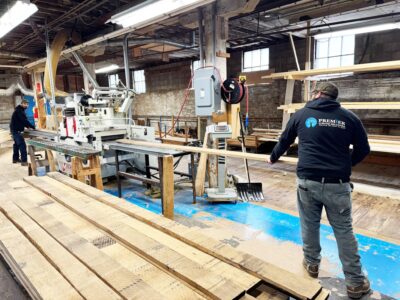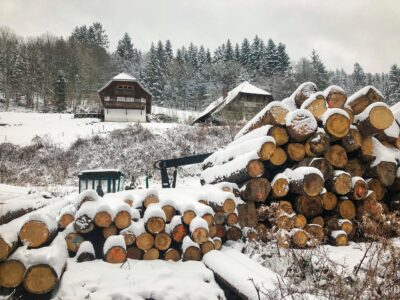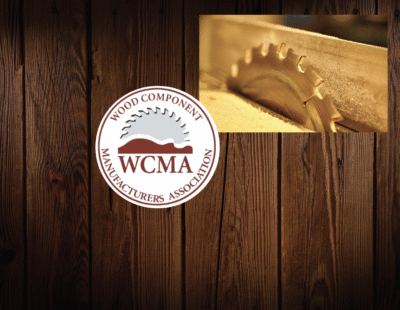
A new guide to update Hardwood log grading and scaling standards has been produced to help foresters, landowners and buyers.
Appalachian Hardwood Manufacturers Inc. and the Appalachian Hardwood Center (AHC) at West Virginia University published “Guidelines for the Scaling and Grading of Hardwood Logs” in 2020. It is the first comprehensive review of general standards since the mid-1960s.
Log scaling and grading are integral components of Hardwood sawmilling and effectively set the bar for generating mill profits or losses. The first efforts to establish standard log grading rules occurred during the early 20th century, but were not formalized.
Beginning in the 1940s, the U.S. Forest Service (USFS) implemented a major effort to document Hardwood log grading. Based on data gathered from individual logs and the lumber produced from those logs, the USFS developed and refined a standardized Hardwood log grading system that was designed foremost to satisfy the day to day needs of the USFS in managing National Forests.
With the final revisions of the USFS system occurring in 1966, no additional documented development has occurred or sustained.
Beyond internal use of the system by the USFS, the system has seen widespread use by the research community, as a means of classifying logs for analysis purposes.
There is little or no documented evidence that the USFS Hardwood grading system has been adopted or even adapted for use by the Hardwood industry.
In fact, there is no universal Hardwood log grading and scaling system used by the Hardwood industry. Instead, the Hardwood industry has informally gravitated to an ad hoc system that is primarily based on species, scaling diameter, and clear faces…resulting in a cornucopia of log grading and scaling rules that lack uniformity among and between Hardwood mills.
“The 2020 Guidelines reflect the reality of today’s Hardwood industry and that provides a level of uniformity in log grading and scaling that is lacking in the marketplace for Hardwood logs,” said Curt Hassler of AHC and Guidelines author.

“The 2020 Guidelines reflect the reality of today’s Hardwood industry and that provides a level of uniformity in log grading and scaling that is lacking in the marketplace for Hardwood logs.”
Curt Hassler, Appalachian Hardwood Center and Guidelines author
In order for the 2020 Guidelines to be applied uniformly and accurately, it is important for mills to establish policies that enable the log inspection activities to function efficiently and effectively. Some of the ways to facilitate the log inspection function are:
- Ensure that logs are not bunched tightly together for the inspectors when they are unloaded onto the yard. It is critically important for the inspector to observe the maximum surface of each log, minimizing the assumptions he/she must make, and thereby minimizing any grading and scaling errors.
- Conduct log grading and scaling with a 2-person team so that log length can be accurately determined using a tape and end conditions can be visually assessed. A 2-person team, although requiring additional labor cost, can improve both inspection time and recognition of scaling and grading defects.
- Avoid payment policies, such as payment at time of delivery, that force grading/scaling to occur in an environment where speed trumps accuracy.
- Educate log inspectors about the manufacturing process so that they have a reasonably good understanding of how log defects impact both the breakdown of logs and the production of grade lumber.
- Establish an in-house quality control system where loads of logs can be checked, scaled and graded at random, to ensure log inspectors are adhering to the established log scaling and grading system.
Certain conditions such as the existence of stain, mineral, gum, and excessive bird peck can negatively impact the production of higher-grade lumber. The 2020 Guidelines recommend that be left to the mill’s discretion to adjust log grade based upon the existence of these various conditions. It is recommended that reductions in grade are limited to no more than two reductions in grade for any given log.
Technical issues and questions regarding these guidelines should be directed to Tom Inman, President, Appalachian Hardwood Manufacturers Inc., at info@appalachianhardwood.org or phone at 336-885-8315.









